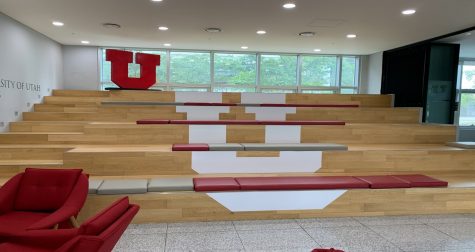What we can do differently next time
March 9, 2021

Faculty, staff and students at the University of Utah Asia Campus (UAC) were notified via email on Sunday 7th March that there is a confirmed case of coronavirus within the community. As of 6pm on Tuesday, a total of three cases was confirmed. In retrospect, having nearly two-thirds of all classes in-person seemed like a big enough stretch, especially with COVID-19 cases hovering around the 500 nationally.
In UAC’s defense, authorities were convinced that with over a year of dealing with the novel coronavirus, the school would be capable of containing the virus. Of course, the university also wanted to provide students with a high-caliber education- to allow students experience university life in-person.
Clearly, just based on the last 72 hours, the community has perhaps come to realize that we are not in as much control as we initially thought- as battling a virus so silent like Covid-19 is no easy task. That being said, however, I believe that now is NOT the time to blame or point fingers at anyone, rather, the UAC community should embrace this opportunity to take preemptive measures to prevent any other spread of the virus.
Firstly, it would have been more cautious of the school to ease its courses back into in-person class versus permitting nearly two-thirds of the courses being in-person right from the get-go of the semester. We must especially realize South Korea is still amid a pandemic, with cases at times being as high as 500.
In contrast, other schools on Incheon Global Campus, including State University of New York Korea (SUNY, Korea) began this semester online and gradually increased the number of in-person classes. Perhaps, starting from April, the school could reach a middle ground by increasing the number of offline classes and slowly building its way back up.
Secondly, the student who was first infected by the virus had allegedly experienced symptoms on Tuesday, had no fever, yet still came to school anyways. Many could argue that it was the student’s fault for attending class, however, as a student myself, I understand the guilt that comes with skipping classes.
The in-person format will most definitely pressure students who are feeling unwell to come to class despite having symptoms. Moving forward, for every course, it makes sense to provide the option to watch a live or recorded video of the class. This way, students have the option to stay back at home when experiencing even minor symptoms.
Lastly, if possible, the majority of classes should lean towards being online, rather than taking the risk of meeting in-person. I personally understand the university’s efforts of providing students with the rich and quality education that they have promised, yet I believe the safety and health of our students should always be prioritized.
Therefore, if a class’ syllabus or content is not affected by the online format, the class might as well be hosted on Zoom. For instance, some courses may require more of an in-person classroom environment than other classes. Whereas, other courses may be more presentation/technology-oriented than others. These classes should especially be prioritized to be on zoom.
Looking back on the last 72 hours, I believe this is a reminder for all campus community members that we are battling a silent yet highly infectious virus, capable of infecting a large number of people within a short space of time.
Just because the KDCC permits in-person classes, it gives us no excuse to be lax on even the most simple social distancing measures. Incorporating the factors above will most certainly aid in reducing the percentage of another confirmed case within our community.
Thank you.
